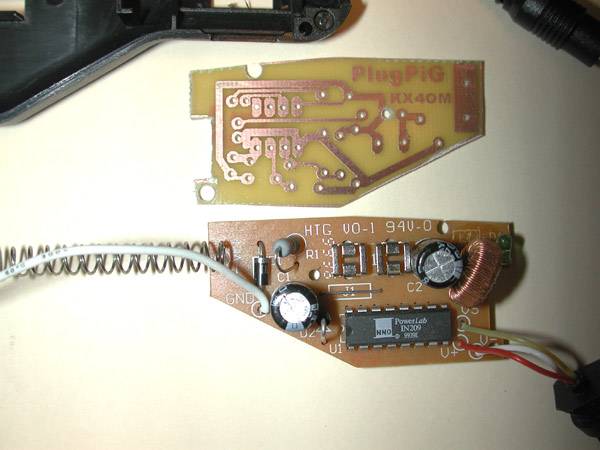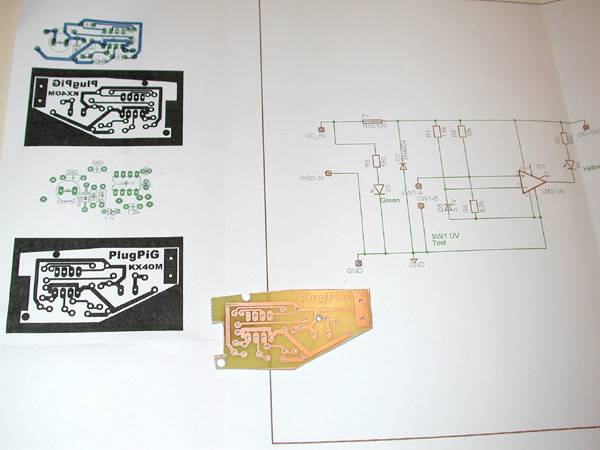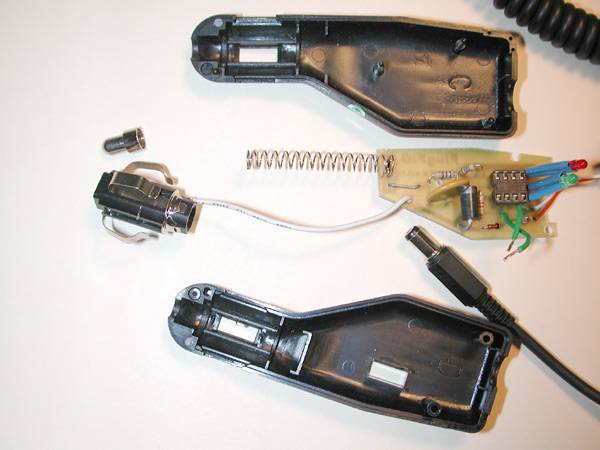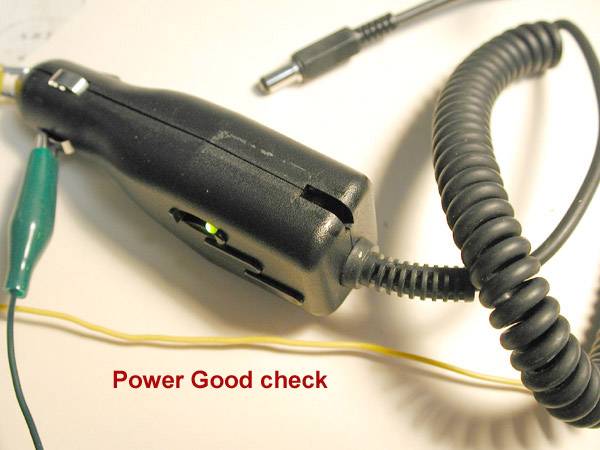





KX4OM Plug PiG

If you've built the NoGa PiG, I don't have to tell you how useful it is. No more blown fuses to your QRP rigs and accessories. Everything 2 amps or less I connect to my battery on the workbench or in the field is protected by this handy unit, which is typically built in an altoids tin. Since I occasionally operate QRP mobile, and I sometimes use the DC socket one of those hefty emergency battery units that are used to jump start a car, I thought it would be nice to have PiG protection anywhere, any time.
Like the original NoGa PiG, the Plug PiG uses a 3Amp-rated shunt reverse power diode, an LM311 used as a voltage comparator, and a Polyswitch RXE135 resettable fuse. The Polyswitch device is rated at 1.35 Amps hold current, 2.7 Amps trip current and 40 Amps maximum current on overload or short circuit conditions.
In
reengineering the PiG functionality for a much smaller case, I decided to
leave out a few features. I didn't need the optional keyer and audio
noise suppression, since this was to be power protection only, and since
it's designed strictly for battery-powered use, I could leave out the
overvoltage protection features. First, I traced out the existing PC
board of the cell phone charger/DC adapter. I created a schematic of the
needed funtionality in EAGLE Cad, and next I laid out the components to
fit the required footprint of the PC board. Then it was a matter of
stuffing the board and testing the short circuit and undervoltage
features of the unit, following the instructions from the original NoGa
PiG. One other addition I made is a "Power Good" LED to let me know that
the socket I'm plugged into actually has power to it.
Below are several photos of the unit as I proceeded through the
design and construction. Click on the images to enlarge them.